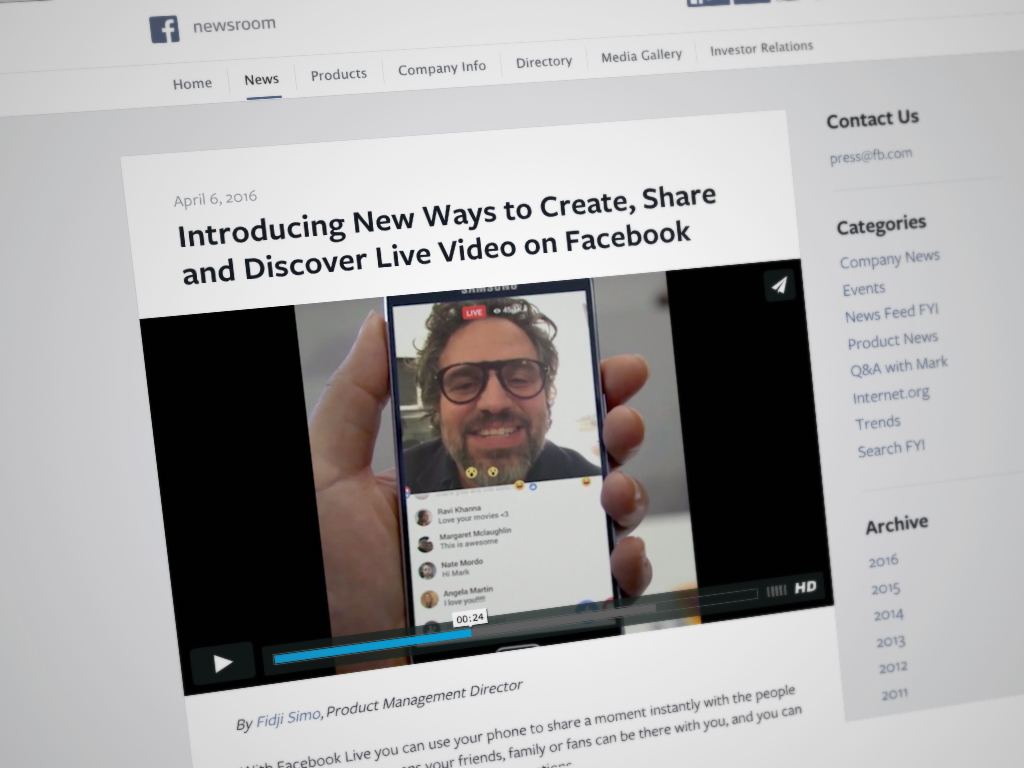Building relationships fosters brand loyalty, important because a repeat customer spends 67 percent more than a new one (BIA/Kelsey). Building loyalists is important because, for many businesses, 20 percent of customers, their best customers, account for 80 percent of their revenue. When thinking about growing a Facebook fan base it’s easy to think first about getting a lot of fans, but there are good reasons for focusing less on quantity and more on quality of your fan relationships.
1. It’s Easier To Tell A Better Story
This year, more money will be spent by brands in the effort to engage audiences through stories, instead of traditional advertisements, than any year in history, according to Contently.
Cleveland Clinic shares posts about improving and understanding our health with posts about food, exercise, sleep and what to expect with different types of illnesses. The top-level topics they share are fairly universal and help the clinic get a lot of top-level engagement. But they also create great engagement by reaching out to a smaller base.

Their post “Can you kiss after chemo?” didn’t engage as many people, but those who shared were invested in the story. People who care about this story may not be associated in any other way, but understanding the truths and myths of loving someone through chemo is a powerful connector.

Mercedes-Benz’s Facebook engagement is less about selling cars and more about engaging around a lifestyle. Sharing customer stories about “cruising the Pacific Coast Highway” immerses fans in a lifestyle inclusive of their beautifully crafted cars through events, images, and their lifelong engaged customers.
Mercedes-Benz frequently shares customer stories, turning customers into storytellers. Since 2013 a couple has covered more than 30,000km with some exciting challenges in their Mercedes-Benz, like passing through the Indian Himalayas. Fans can follow their journey here.

Samsung Mobile’s Facebook Page focuses not on their products, but how real people use their products. Sharing the many ways people use their features to take better selfies gets Samsung great engagement and educates users on new product innovation.
When marketers focus less on the quantity and more on quality it allows for better, more focused storytelling because we’re not trying to “boil the ocean” and reach everyone. We’re trying to reach our loyalists.
2. It’s Easier To Leverage Partnerships
Red Bull owns creating partnership to grow their brand fanatics, whether that’s with sports teams or car brands like Volkswagen and Mercedez-Benz. They know their audience psychographics, find other brands who engage that audience and partner to promote their stories and engage fans.
Starbucks Love Stories by Match shares stories of how people had their first date at the coffee shop. This partnership combines the beauty of love stories and hope with a cup of coffee, illustrating brand value for both Match.com and Starbucks.
Nurturing partnerships for the goal of pleasing customers and adding value is easier when we’re focused on the value we bring rather than the numbers we hope they’ll bring.
3. It Helps Focus On Caring
Andrew Stanton, great storyteller and filmmaker, says that storytelling and engagement is about “making them care.” Starbucks’ mission “Inspiring and nurturing the human spirit – one person, one cup, and one neighborhood at a time” is evidenced by its engagement strategies with fans.

In their #howwemet portrait series, Starbucks gives customers a chance to share how they meet and create engagement in their lives through coffee and Starbucks locations. Hashtags combined with customer storytelling is the perfect caring and sharing combination.
If “making them care” is the key to great storytelling, marketers have a better chance of truly inspiring care from a smaller engaged fan base than a larger, mildly interested base.
4. It Drives Better Cross-Channel Integration And Business Analysis
Email will be just as important to engaging with and growing your audience on Facebook as the social platform itself. Heeding the “content strategy first, channel second” axiom helps marketers see building a Facebook audience as building a brand audience that adheres to brand strategy. Cleveland Clinic beautifully connects Facebook fans to the content they own on their site and follow through with connecting readers to relevant content deeper in the funnel with email.
Vanity metrics like fan count doesn’t matter as much as the metrics around dedicated fans that read, engage with and share brand stories. These more important Facebook Fan metrics should live in the analytics dashboard, not in siloed reporting.
Organic reach on Facebook is dwindling and paying to find and engage fans will only get more costly. Focusing less on quantity and more on quality will assure that your paid social media spends get long-term engagement rather than passing endorsement.
Takeaways
Sometimes less is more. Creating Facebook fan campaigns that have an opportunity to be highly engaging for a smaller number of fans is a great way to build an audience that stays connected and consider themselves as part of a tribe. Building relationships and growing a fan base is a long-term commitment with the power to build loyalty.
Analyzing how Facebook reach and engagement impacts your brand and testing are the best ways to help you define your Facebook strategy. There aren’t hard and fast rules. As Facebook engagement continues to get more expensive it’s more important than ever for marketers to know the answer to this question.


